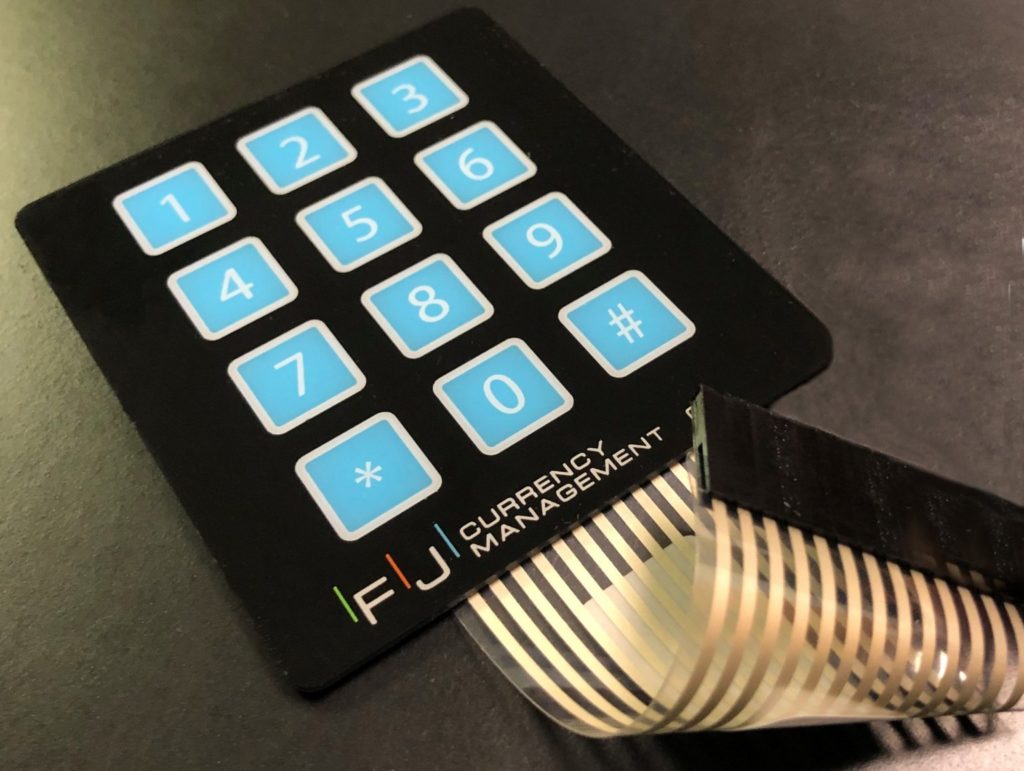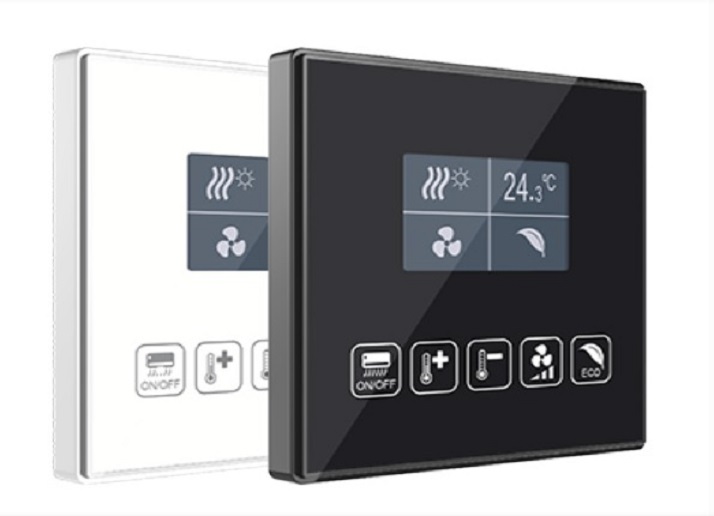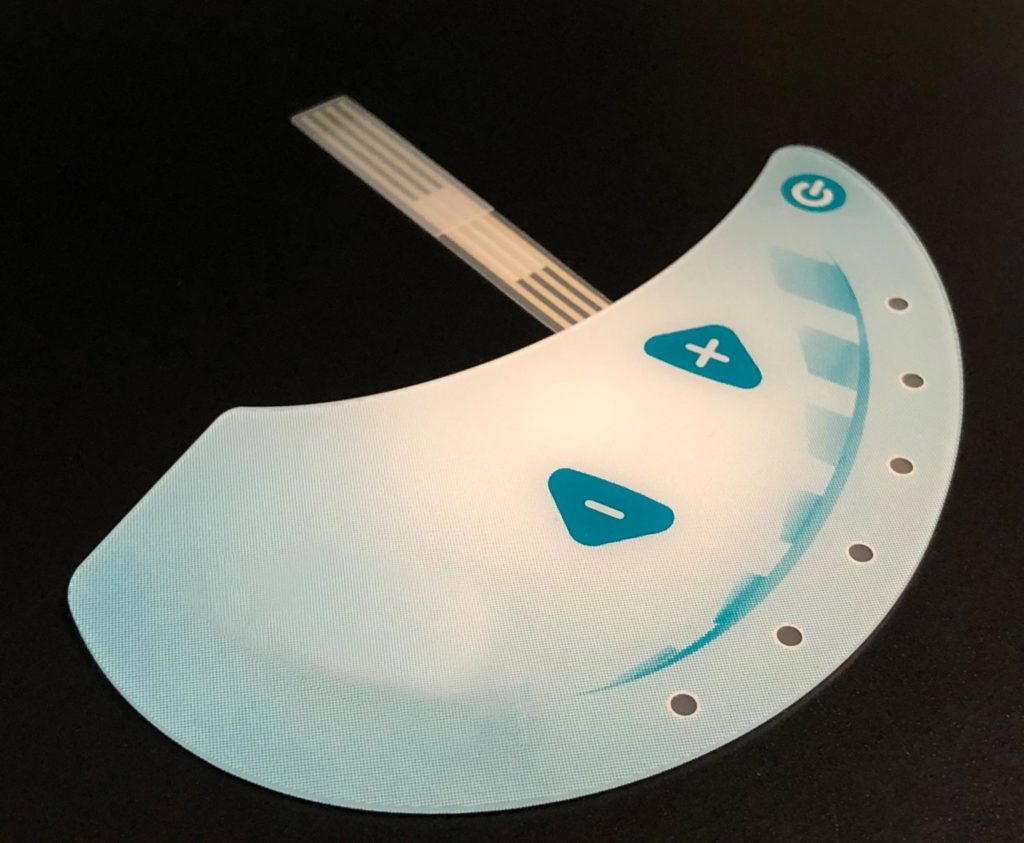Capacitive Switches
A capacitive switch is a type of touch controlled electrical switch that operates by measuring change in capacitance. It functions in the same manner as a standard capacitive smartphone or tablet: when the surface is touched, a small electrical charge is transferred from your body to the switch which subsequently causes a change in capacitance. The switch ultimately detects this change in capacitance and responds with the appropriate command of that specific key or location. The electrical charge caused by touching the capacitive switch disturbs the switch’s own electrical charge causing a change in capacitance. This change allows the switch the ability to easily identify both when and where the touch occurred.
Capacitive Switch Construction
A capacitive switch consists of three main layers, the graphic overlay, the circuit, and the backer:
- Overlay: consists of the graphic artwork and can also include windows, embossing, coatings, adhesives, LED indicator ports, and selective texturing.
- Circuit switch: will either be a flexible printed circuit or a printed circuit board.
- Backer: is typically made of plastic, acrylic, and glass due to their durability and versatility. The backer may or may not include an pressure sensitive rear adhesive to bond to your specific substrate.
Capacitive touch switches are widely used in many different industries: aerospace applications, military equipment, medical instruments, intelligence control, commercial appliances, security products, consumer electronics, household appliances, automobile controls, etc.

Advantages of the Capacitive Switch Technology
There are no mechanical components in a capacitive switch, resulting in a longer lifespan when compared to their mechanical counterpart. Additionally, capacitive switches can withstand some of the harshest environments, including harsh outdoor environments.
An important note to remember about capacitive switches is that they require direct contact with a conductive object to operate. This is why using a stylus typically won’t work (unless it’s a capacitive stylus).
Capacitive switches can also be used in a wide range of applications, including vending machines, smartphones, tablets, human machine interfaces (HMIs), industrial controls, appliances, infotainment centers and more. Furthermore, they support integration of other features like light-emitting diode (LED) backlights.


Capacitive Switch Backlighting
If you would like to backlight your capacitive switch application, the construction would incorporate either light guide film or LEDs for uniform lighting. Other options for backlighting are fiber optic backlighting and EL backlighting. Depending on the requirements of your application such as thickness preference, shape, environmental exposure, and other unique specifications, the backlighting options would vary and be selected specifically to fit the function of your device. Using the latest LED powered lighting can reduce cost and reduce power used by a device.
The capacitive switch design also allows for easy integration of LED indicators (as shown in the picture right).
